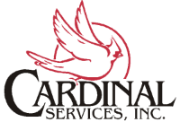Business mileage rate increases to 62.5 cents per mile, up from 58.5 cents
Citing soaring gas prices, the Internal Revenue Service (IRS) on June 9 announced an increase in the optional standard mileage rate for the final six months of 2022.
Effective July 1 through Dec. 31, 2022, the standard mileage rate for the business use of employees’ vehicles will be 62.5 cents per mile—the highest rate the IRS has ever published—up 4 cents from the 58.5 cents per mile rate effective for the first six months of the year, according to IRS Announcement 2022-13.
The rate is used to compute the deductible costs of operating an automobile for business use, as an alternative to tracking actual costs. Beyond the individual tax deduction, employers often use the standard mileage rate—also called the safe harbor rate—to pay tax-free reimbursements to employees who use their own cars, vans or trucks to conduct business for their employers.
Organizations are typically required to reimburse their workforce for the business use of their mixed-use assets, or personally owned assets such as vehicles that are required for their jobs, excluding routine commuting costs.
Employers have the option of calculating the actual costs of employees using their vehicles rather than using the standard mileage rates. The IRS normally updates standard mileage rates once a year in the fall for the next calendar year. For vehicle use from Jan. 1 through June 30, 2022, employers and employees should use the rates set forth in IRS Notice 2022-03.
While fuel costs are a significant factor in the mileage figure, other items enter into the calculation of mileage rates, such as depreciation and insurance and other fixed and variable costs, the IRS noted. For cars employees use for business, the IRS set the portion of the standard mileage rate treated as depreciation at 26 cents per mile for 2022.
Mileage Rate Changes Through 2022
For the final six months of 2022, standard mileage rates for the use of cars, vans, pickups or panel trucks will be:
| Purpose | Jan. 1 to June 30 | July 1 to Dec. 31 |
| For business use | 58.5 cents per mile | 62.5 cents per mile |
| For medical care and for moving active-duty members of the Armed Forces | 18 cents per mile | 22 cents per mile |
| In service of charitable organizations* | 14 cents per mile | 14 cents per mile |
*The 14 cents per mile rate for charitable organizations remains unchanged as it is set by statute. Source: IRS (June 2022).
Using FAVR Plans
The IRS rate is optimal for low-mileage drivers, such as those who travel fewer than 5,000 business miles per year, according to benefits advisors. Alternatively, Notice 2022-03 provided maximum vehicle expenses when using a Fixed and Variable Rate (FAVR) allowance plan, in which employees who drive their own vehicles can receive tax-free reimbursements from their employers for fixed vehicle costs (such as insurance, taxes and registration fees) and variable vehicle expenses (such as fuel, tires, and routine maintenance and repairs), instead of the standard mileage rate.
Under a FAVR plan, the cost of the vehicle may not exceed a maximum amount set by the IRS each year. For 2022, vehicle costs may not exceed $56,100 for automobiles, trucks and vans, up from $51,100 in 2021. These rates remain unchanged through 2022.
Revenue Procedure 2019-46, which updated the rules for using standard mileage rates in computing the deductible costs of operating a car for business, stated that an employer may provide a FAVR allowance only to an employee who can provide adequate records showing at least 5,000 miles driven during the calendar year in performing services as an employee or, if greater, 80 percent of the annual business mileage of that FAVR allowance.
If the employee is covered by the FAVR allowance for less than the entire calendar year, the employer may prorate these limits on a monthly basis.
Organizations that have adopted methodologies like FAVR, that factor in the many components of vehicle costs, have realized significant cost savings in a way that is compliant with federal and state tax and labor laws, while ensuring that their mobile workforces are fairly and accurately reimbursed no matter how volatile the market gets.
It has been calculated that organizations saved more than $1.4 billion using FAVR reimbursement compared to the IRS business mileage standard from 2011 through 2021. In part that’s because the standard mileage rate doesn’t account for driving costs that fluctuate based on geography and time of year, so businesses that rely on the rate to reimburse mid- and high-mileage workers may be giving reimbursements that exceed actual driving costs.
However in locations with higher automobile operating costs, the FAVR allowance may be more than the standard mileage rate. Also, the employer must recalculate the FAVR allowance at least once every three months as payments to employees must be made at least quarterly.
Flat Car Allowances
Another way for employers to reimburse employees for their business-driving expenses is a flat car allowance, which is a set amount provided to employees over a given period to cover the costs of using their own car for business purposes—such as $500 per month for the cost of fuel, wear and tear, tires, and more. Employers can also pay expenses using a variable rate for different locations. While a car allowance is relatively easy to administer, payments are taxable to employees unless handled within an “accountable plan” [see link for an explanation of this type of program] that requires substantiation through adequate records and the return of excess amounts in a reasonable time.
If you need to update your employee’s mileage rates – please note that on your next time card submissions. Call or email Cardinal if you have any questions on this topic.
